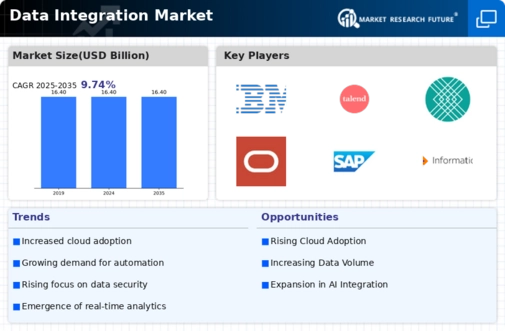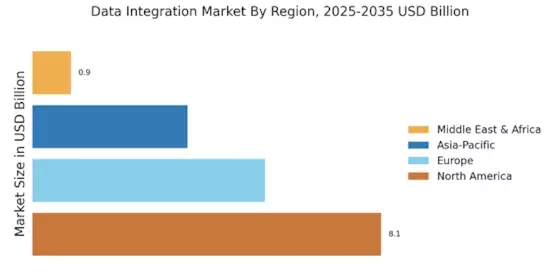The Global Data Integration Market is a dynamic and rapidly evolving landscape that serves as a backbone for businesses aiming to consolidate, manage, and analyze data from diverse sources. With the surge in digital transformation initiatives, organizations are increasingly turning to data integration solutions to streamline their operations, enhance decision-making, and improve customer experiences. The competitive landscape is characterized by a variety of players, including major technology firms, start-ups, and specialized vendors, each offering unique solutions and capabilities.
As businesses continue to seek out robust data integration strategies to handle vast amounts of data generated across multiple channels, understanding the competitive insights of the market becomes essential for stakeholders looking to identify opportunities, evaluate risks, and drive innovation.Amazon Web Services has established a formidable presence in the Global Data Integration Market, leveraging its extensive cloud infrastructure to offer a wide range of services that cater to the needs of businesses and developers alike. Known for its scalability and reliability, Amazon Web Services provides tools and platforms that facilitate seamless integration of data across varied applications and environments.
The company's focus on creating a user-friendly interface combined with powerful functionalities enables organizations to efficiently connect data sources, automate workflows, and derive actionable insights.
Furthermore, Amazon Web Services continuously innovates through regular updates and feature enhancements, ensuring that its solutions remain competitive and aligned with industry trends. This commitment to customer success, alongside its strong security measures, positions Amazon Web Services as a leader in the data integration space, making it a preferred choice for numerous enterprises.IBM also plays a significant role in the Global Data Integration Market, offering a suite of comprehensive data integration solutions that emphasize flexibility, performance, and security.
With a strong heritage in enterprise software and a deep understanding of the complexities involved in data management, IBM provides organizations with advanced tools that simplify the process of aggregating, transforming, and migrating data. The company's integration platforms are designed to support various data formats and environments, allowing businesses to create a cohesive data ecosystem. Additionally, IBM's emphasis on artificial intelligence and machine learning capabilities enhances its data integration solutions, enabling organizations to not only integrate data effectively but also gain predictive insights for strategic decision-making.
Through a combination of innovation, strong customer relationships, and a dedication to addressing the evolving needs of businesses, IBM reinforces its competitive positioning within the Global Data Integration Market.


















Leave a Comment